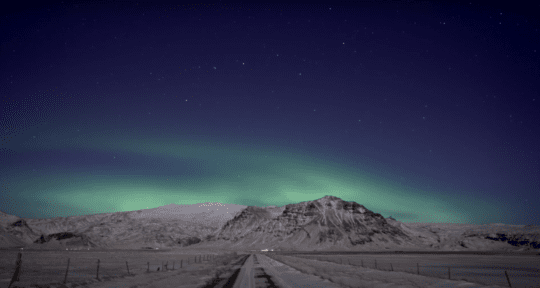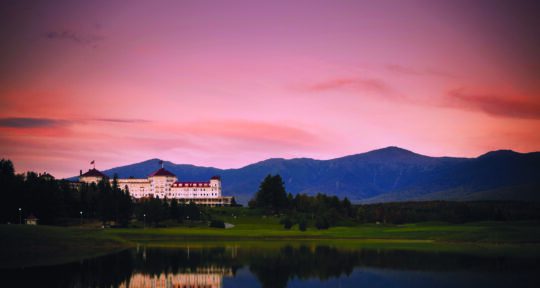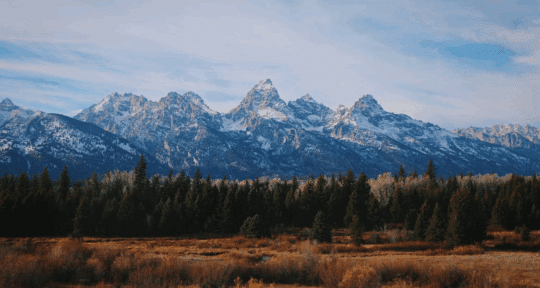With countless cultural offerings, an array of dining options, and different neighborhoods to explore, it’s not surprising that cities are popular travel destinations. But along with the attractions and sizable populations, these bustling metropolises also have another less desirable feature: light pollution.
And while that’s not something that many travelers would even notice, those who enjoy sightseeing in the night sky certainly will. At the same time, if you hit the road in search of skies dark enough for stargazing, there’s not always much to do during daylight hours, given their often remote locations.
Video: How to plan a stargazing road trip
These five dark sky destinations offer the best of both worlds: optimal nighttime conditions for observing the stars and planets, and an abundance of daytime activities. So grab your telescope, pack your bags with seasonally appropriate outdoor clothing, and get ready to see some stars at night—and plenty of sights and scenery during the day.

1. Tupper Lake, New York
Encompassing more than 6 million acres of land, the Adirondack Park is the largest publicly-protected area in the contiguous U. S., and the town of Tupper Lake, New York, is situated right in the middle. Like the rest of the region, Tupper Lake has no shortage of outdoor activities throughout all four seasons, but two unique nature-focused attractions set it apart.
The first is the Adirondack Sky Center & Observatory, which offers some of the darkest skies in the Eastern U.S., thanks to a combination of low light pollution, low humidity, and high altitude. In fact, on April 8, 2024, Tupper Lake will have dark skies during the day, as it will experience a total solar eclipse.
Don’t be left in the dark—here are the best places to see the 2024 solar eclipse
Nature lovers could easily spend entire days at The Wild Center, home to the Wild Walk—an elevated, accessible treetop trail consisting of bridges and walkways that offer a bird’s-eye view of the Adirondack forest—as well as indoor exhibits on the natural history of the area, outdoor activities including a series of ground-level trails, and a “wild play area” for kids.
Before embarking on your daytime adventures, stop at The Washboard/Donut Shoppe, where you can grab hot coffee and fresh doughnuts, and do a load of laundry in one convenient location. Take at least one day to make the 20-mile drive to the neighboring town of Saranac Lake, which served as a haven for people with tuberculosis in the days before antibiotics—a rich history you can learn more about at the Saranac Laboratory Museum.
7 must-see stops on an Adirondacks road trip
Back in Tupper Lake, if the weather gets in the way of your evening stargazing plans, catch a movie at the historic State Theater, which hosted vaudeville acts and silent films when it opened in July 1914, but now screens new releases. If live entertainment is more your style, check out Tupper Arts, which offers everything from concerts to lectures to dance and art classes.

2. Mackinaw City, Michigan
It’s known as the “Gateway to the Upper Peninsula,” but Mackinaw City, Michigan, is also your gateway to some of the best stargazing in the country. It’s home to Headlands, one of the first 10 designated International Dark Sky Parks in the world. And because the park is open 24 hours a day, 7 days a week, you can take all the time you need observing the night sky.
Not only is the 600-acre park the perfect place to spot some planets and shooting stars, but thanks to its northern latitude and lack of light pollution, Headlands is also one of the best places in the U.S. to catch the northern lights. Although it’s difficult to predict when, exactly, the aurora borealis might be visible in the area, the phenomenon tends to be most common from late summer to early spring.
Where to camp to see the northern lights
Don’t forget to make time for daytime activities, too, like a visit to Old Mackinac Point Lighthouse, which has been standing guard on the Straits of Mackinac since 1889, and the Great Lakes Shipwreck Museum, where you can see the bell from the Edmund Fitzgerald and take a guided tour of a lightkeeper’s living quarters as it would have looked in 1861.
Those who aren’t interested in maritime history can spend their day relaxing on one of the area’s sandy beaches, take a trip to Mackinac Island on the passenger ferry, or explore historic downtown Cheboygan, which is only a 20-minute drive away.
The couple behind Michigan’s Wacky Taxidermy and Miniatures Museum wants to keep Mackinaw City weird
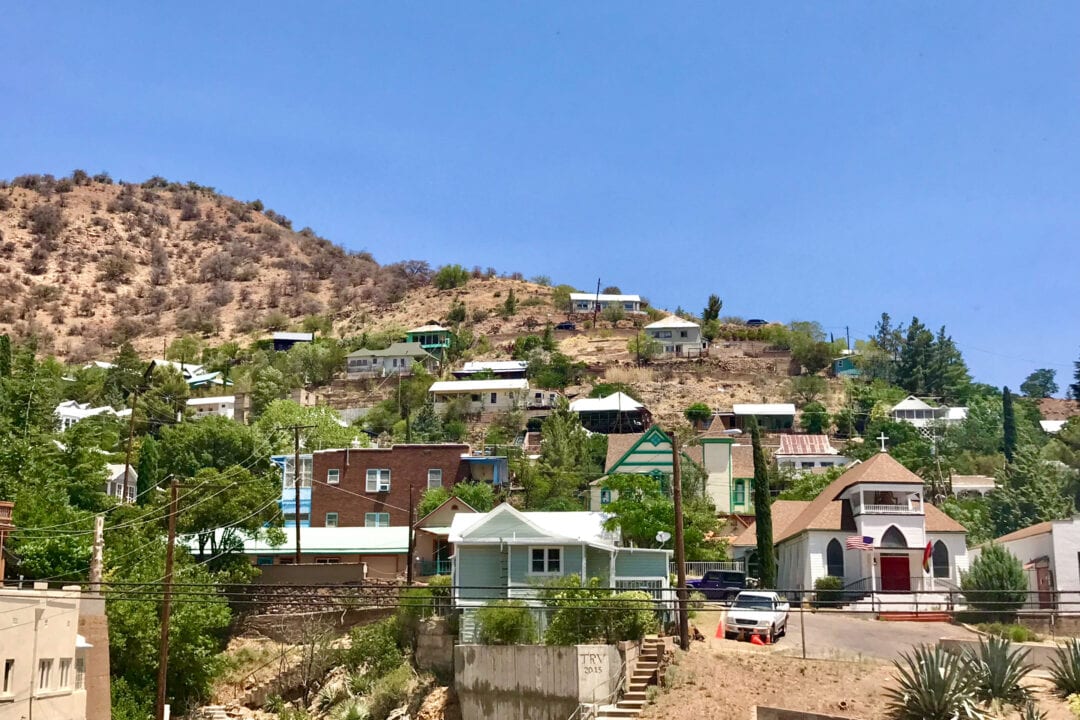
3. Benson, Arizona
The city of Benson, Arizona, started off as a stop on a stagecoach mail delivery route in the 1870s, but experienced its real growth in the 1880s when it became a railroad hub. And though it’s no longer a transportation and commercial center, two Amtrak lines continue to service Benson.
Today, Benson’s main attraction is Kartchner Caverns State Park, which is a designated International Dark Sky Park located 10 miles south of the city. In addition to being a popular destination for professional and amateur astronomers, the park also hosts a variety of public events throughout the year—including popular, family-friendly star parties. But don’t miss out on a daytime visit to the world-renowned caverns, where you can take different tours of the cave and learn about the geological wonder.
Other than taking a walking tour of the city’s historic murals, there’s not much else to see in Benson. Fortunately, there’s plenty to see and do roughly 45 miles southeast in Bisbee, a former copper mining town with impressive architecture and a lively arts scene. Make the Object Hotel—once the city’s Woolworth’s department store—your home base.
While in Bisbee, take the time to explore the compact, well-preserved historic district, making stops at the stunning Copper Queen Library and the Smithsonian-affiliated Bisbee Mining and Historical Museum, as well as some of the city’s excellent vintage and artisan craft shops, including Object Limited, located on the hotel’s ground floor. Or, take the 4-mile trip to what remains of Lowell, a former mining community that’s now a partial ghost town slowly coming back to life, and grab a meal or snack at Bisbee Breakfast Club.

4. Ramah, New Mexico
Roughly 2,000 years ago, Ancestral Puebloans formed multiple agricultural communities throughout the El Morro Valley, in what is now Western New Mexico. Today, however, that area—now the El Morro National Monument—is removed from the region’s cities and their bright lights, making it ideal for observing the night sky.
In 2019, El Morro was designated as an International Dark Sky Park; on clear nights, the location and elevation of the park make it possible to see the Milky Way stretch from horizon to horizon. El Morro closes at 5 p.m. on most days, but often has public astronomy programs, so be sure to check the park’s events calendar before planning a stargazing trip.
During the day, take the time to hike at least one of El Morro’s two trails: One is a half-mile paved loop that passes by prehistoric petroglyphs carved into the rock, while the other is an unpaved 2-mile loop with a 250-foot elevation gain that gives hikers the chance to see an Ancestral Puebloan dwelling.
While visiting El Morro, consider staying—or at least spending a day—in Gallup, New Mexico. Located about 55 miles northwest of the park, Gallup has a rich history, first serving as a trading hub for the region’s Navajo people, and later, as an important stop on the railroad, then Route 66. While you’re there, learn about the Navajo Code Talkers and their role in World War II at the Gallup Cultural Center, track down some of the many examples of New Deal-era WPA art placed throughout the city, and cruise down Route 66 after dark, taking in an impressive array of mid-century neon signs.
The ultimate Route 66 road trip
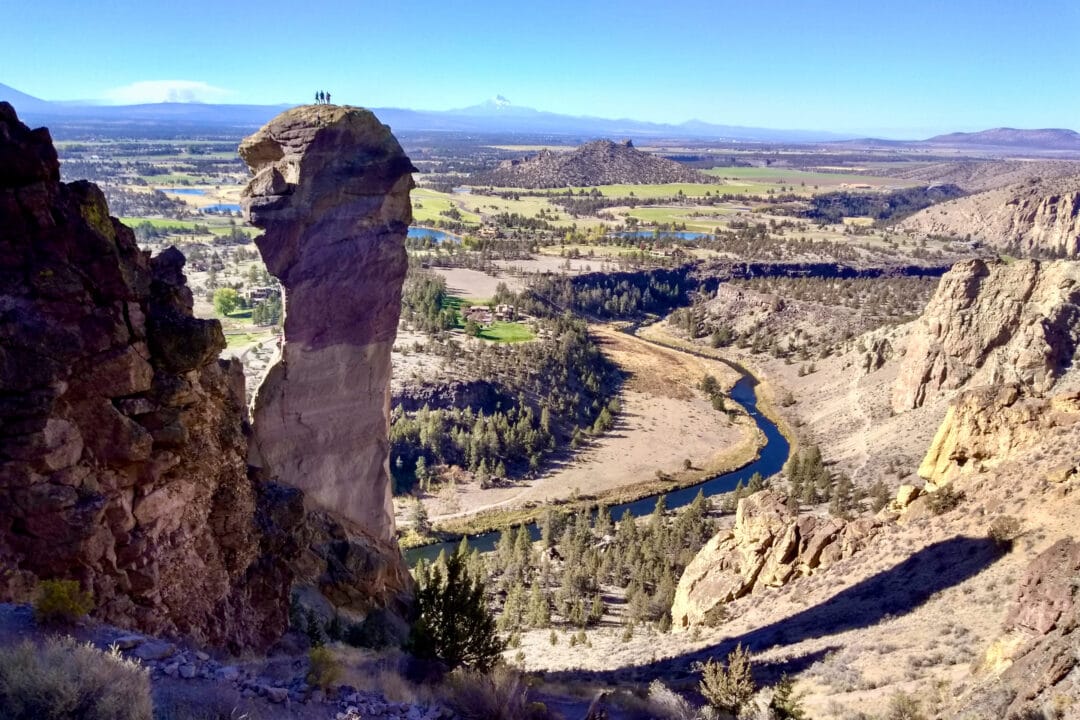
5. Prineville, Oregon
Central Oregon is home to breathtaking scenery, imposing rock formations, and lush green landscapes. Once the sun goes down, it’s also a great spot for stargazing—especially at Prineville Reservoir State Park, an International Dark Sky Park. The lack of light pollution and vast expanses of darkness in Oregon’s Southeast corner provide the ideal conditions for viewing the stars and planets.
Your best bet is attending one of the park’s public educational programs, where an expert walks you through what’s on display in the sky. Otherwise, be sure to print and complete this Stargazing Permit and place it on your vehicle’s dashboard when viewing the stars after park hours in the designated day-use area. There are primitive campsites along the 43-mile shoreline of the reservoir, but if that’s not your style, you can find a range of motels, inns, and bed-and-breakfasts about 14 miles north in the town of Prineville.
During the day, head roughly 35 miles northwest to Smith Rock State Park, where you can choose from a variety of hikes ranging from a half-mile stroll along the canyon edge, to the more grueling 3.7-mile Misery Loop Trail, which brings you to the 3,360-foot summit. Or, head about 50 miles northeast of Prineville to Oregon’s Painted Hills, then explore the park by foot, using your pick of the five available trails. If you’re short on time, opt for the half-mile scenic Painted Hills Overlook Trail, or the 0.25-mile Painted Cove Trail.
